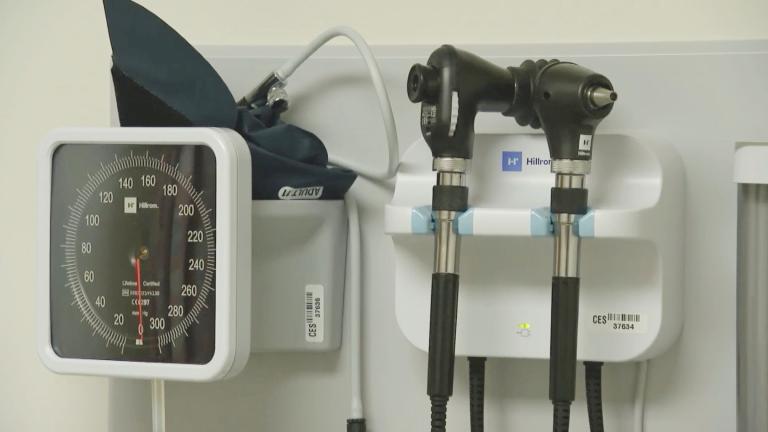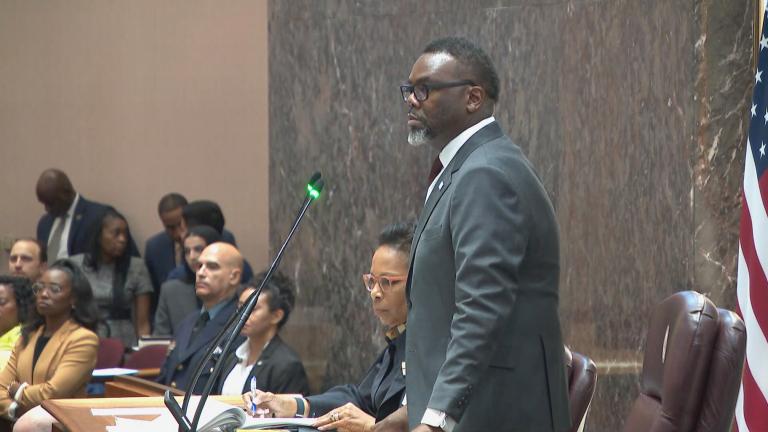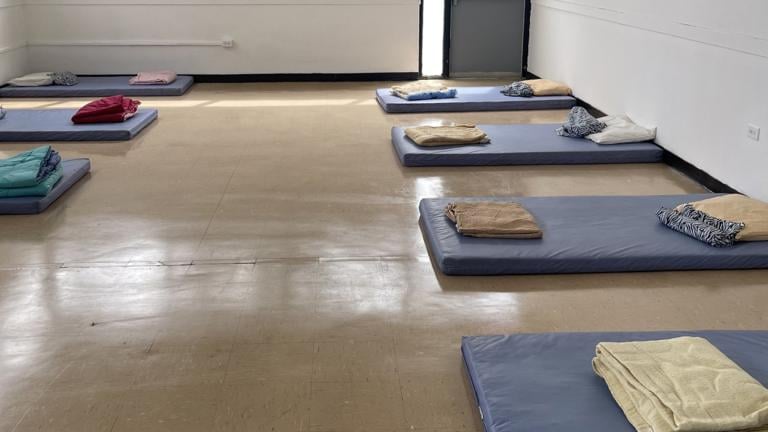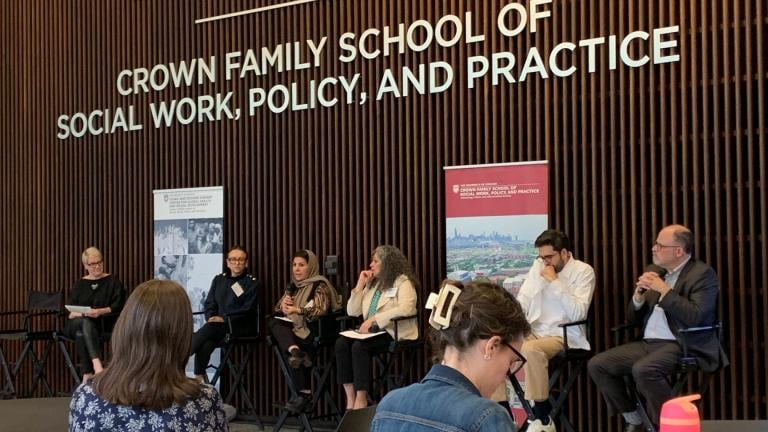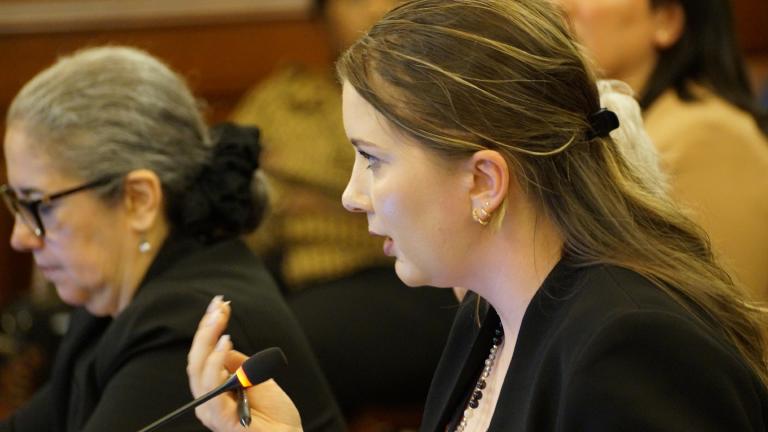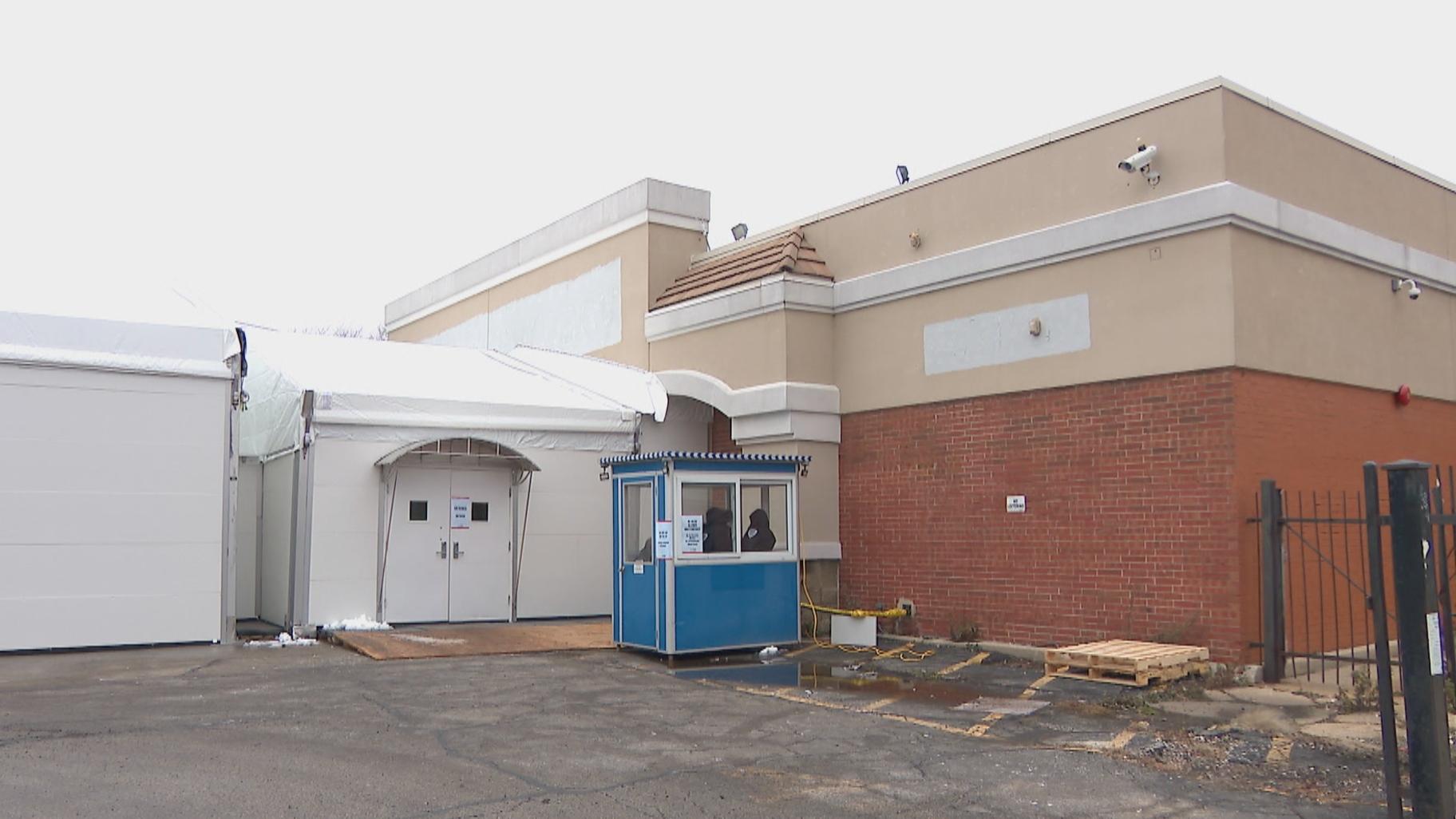 A migrant shelter opened Jan. 10, 2024, at a former CVS in Little Village. (WTTW News)
A migrant shelter opened Jan. 10, 2024, at a former CVS in Little Village. (WTTW News)
As Illinois opened a new shelter Wednesday in Little Village that will house a fraction of the more than 30,000 Latin American migrants sent to Chicago from Texas, Gov. J.B. Pritzker hinted that strategies are in play to prevent more migrants from coming to Chicago via plane.
The shelter, on a former CVS lot at 27th Street and Pulaski Road, can accept 220 people, with priority going to families and individuals with disabilities.
“It’s phenomenal what we’ve been able to do in a relatively short period of time and to accommodate very young children,” Pritzker said. “Making sure these young children have a place that they can play, even in a very difficult situation, that’s been put into this site. It’s well managed. And I feel good about the opportunity there.”
But, per media reports, those who don’t get a bed in that or other shelters may well find themselves stuck for days living on heated buses near Chicago’s migrant landing zone downtown.
The Democratic governor said it’s at the feet of Republican Gov. Greg Abbott of Texas, who Pritzker said is perpetuating a “cheap political stunt” in hopes of scoring points in a presidential election year.
“It won’t. People care about people,” Pritzker said. “And the humanitarian crisis that the Texas governor and Republicans are causing is one that we intend to address.”
Illinois officials said they don’t know when or where migrants will arrive, nor how many — making it difficult to coordinate care, particularly given that many asylum seekers don’t have coats and clothing appropriate for Chicago’s winter weather.
Chicago has attempted to get a better handle by requiring buses make drop-offs at the landing zone within specified times, or face fines.
Busloads of migrants have since arrived in communities outside Chicago, leading suburban communities to enact their own bus restrictions.
Privately chartered planes of migrants have also landed in Chicago and in Rockford.
No planes of migrants arrived in recent days, though, Pritzker said, hinting that it’s due to steps the state is taking.
“We’re trying to prevent those companies from leasing their planes to the state of Texas,” Pritzker said. “In general, you can’t tell a group of people, or an aircraft, that it can’t come somewhere. On the other hand, there are lots of things that I think would be a significant deterrent, and they already are working.”
Pritzker said he didn’t want to “give away our strategies” by sharing specifics.
Communities outside Chicago are meanwhile working with the city.
Mayor Brandon Johnson’s office announced that he and the Metropolitan Mayors Caucus are jointly organizing a meeting scheduled for Tuesday at the United Center with mayors from the Chicago region to strategize about how to handle the onslaught of migrants.
“Our goal is to share operational strategy and work towards a collective plan for coordination and advocacy for additional support,” Johnson said in a statement Wednesday. “This collaboration is essential for maintaining a humane regional response.”
The meeting won’t be open to the public or press, but Johnson’s office said there will be a media availability afterword.
Mayors have met virtually, Johnson said, but this will be the first in-person large group gathering.
According to the caucus, since December, 200 buses have dropped off migrants in communities outside Chicago. Chicago, meanwhile, has received 535 buses since January of last year.
Migrants who initially land in the suburbs are sent, sometimes via Metra train, to Chicago’s landing zone, located at Desplaines and Polk streets.
An intake center near that site, first announced by Pritzker in late November, is still under construction.
The Pritzker administration said the center will have six heated tents where new arrivals can receive wraparound services to connect with shelter, health, work and other needs, including travel to locations outside Illinois.
The new Little Village shelter and the intake center are part of a $160 million state funding commitment Pritzker announced late last year, drawing from funds previously allocated for other uses.
Pritzker said he’ll ask the legislature to approve a supplemental budget to backfill that spending.
The General Assembly will begin its 2024 session next week, but Pritzker said lawmakers don’t immediately need to approve the money.
“I’ve brought this up to (legislative) leaders,” Pritzker said. “They haven’t wanted to bring it up yet. I do think it’s going to be important to deal with the costs here that are rising all the time, or at least the toll is rising. And we’re all working together to try to meet the demand.”
The governor, in his fist time taking reporters’ questions since mid-December, said that he continues to press the federal government to come through with support — in the form of both money and coordination.
Until then, he said, the costs will be borne by the city and state.
Pritzker said he’s pessimistic that the Republican-controlled U.S. House will reach a deal on border reform.


